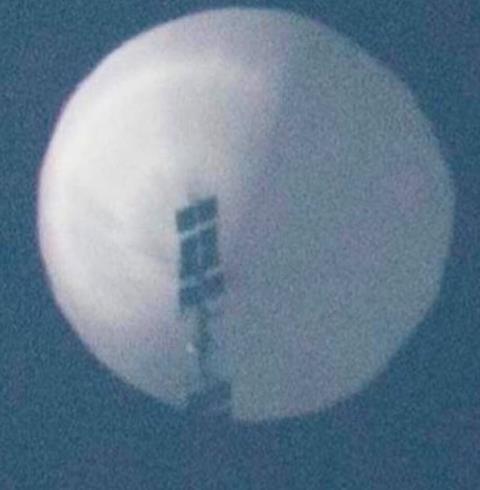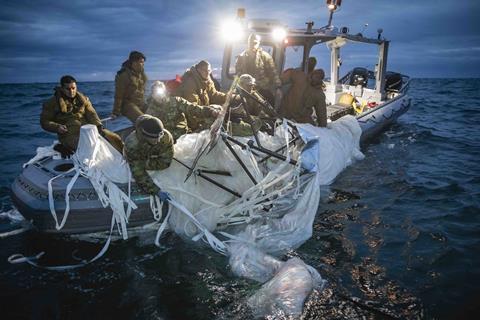The Pentagon says mysterious Chinese surveillance balloons have made flights over at least five continents.
US Department of Defense (DoD) press secretary Brigadier General Pat Ryder said on 8 February recent analysis by defence officials indicates the balloons have operated over a wide range of the globe, including Central and South America, Southeast Asia, East Asia and Europe.

“This is what we assess as part of a larger Chinese surveillance balloon programme,” Ryder says. He adds that US military analysts are “100% clear” the balloons are not civilian airships, as Beijing has claimed.
The US Department of State concurs, adding on 9 February that “some 40 countries” have experienced previous violations of territorial sovereignty by the dirigibles.
The Pentagon also confirms the unmanned balloons have breached American airspace during four separate incidents since 2017, in addition to the recent high-profile episode, in which a balloon entered the airspace of the continental USA on 2 February.
That flight ended abruptly on 4 February, when a US Air Force (USAF) Lockheed Martin F-22 stealth fighter downed the balloon with a single Raytheon AIM-9X Sidewinder air-to-air missile off the coast of South Carolina.
Beijing continues to deny the vessel was of a military nature and condemned the use of force by Washington. The DoD is currently in the process of recovering wreckage from the downed airship.
When asked how the US military failed to identify the previous balloon airspace violations, Ryder reveals the DoD had been tracking China’s airship fleet before February incident and implied the Pentagon had simply withheld the information from the public.
“Those are things we’re not necessarily going to talk about publicly”, the USAF general says.
However, the top officer at North American Aerospace Defense Command (NORAD), which is responsible for monitoring the airspace of the USA and Canada, separately appeared to contradict Ryder. Speaking on 6 February, USAF General Glen VanHerck says NORAD did not identify previous balloon incursions.
“I will tell you that we did not detect those threats,” VanHerck reveals. “That’s a domain awareness gap that we have to figure out.”
He adds that the DoD retroactively identified the four previous balloon penetrations with the help of American intelligence agencies using “additional means” of information collection and analysis.
However, Ryder notes the DoD’s awareness of the balloon issue has increased in recent years, which helped NORAD identify and respond to the recent incursion.
“We have been able to put together a body of knowledge that allows us to track them and accurately identify them,” Ryder says of the intelligence gathering dirigibles.
The Pentagon is revealing little about the mysterious balloons, although Ryder says the DoD “gained a lot of information” during the recent balloon transit of the continental USA.
“We do know there is variation [of] the sizes and capabilities,” Ryder says, adding all the balloons share the common trait of being intelligence-gathering platforms.
“We know they were looking to surveil strategic sites, including some of our strategic bases,” he adds, without revealing specific details.
VanHerck said on 6 February that the DoD “took maximum precaution” to prevent the recent balloon from collecting any sensitive information.
He also has revealed additional details about the downed balloon’s size and characteristics. The inflatable portion of the balloon is estimated to have been roughly 60m (200ft) tall, not including the surveillance package suspended below.
“The payload itself, I would categorise that as a jet airliner type of size, maybe a regional jet such as an [Embraer] ERJ,” says VanHerck, who is rated on the Boeing F-15 fighter and Northrop Grumman B-2 Spirit strategic bomber.

While the balloon did travel along the prevailing wind direction, as Beijing has claimed in its defence, VanHerck’s assessment is the craft’s path was purposefully planned.
“It’s a manoeuvrable platform”, he says. “They utilise their manoeuvrability to strategically position themselves to utilise the winds to traverse portions of countries that they want to see for collection purposes.”
Story updated 9 February to include additional information from the US state department


























